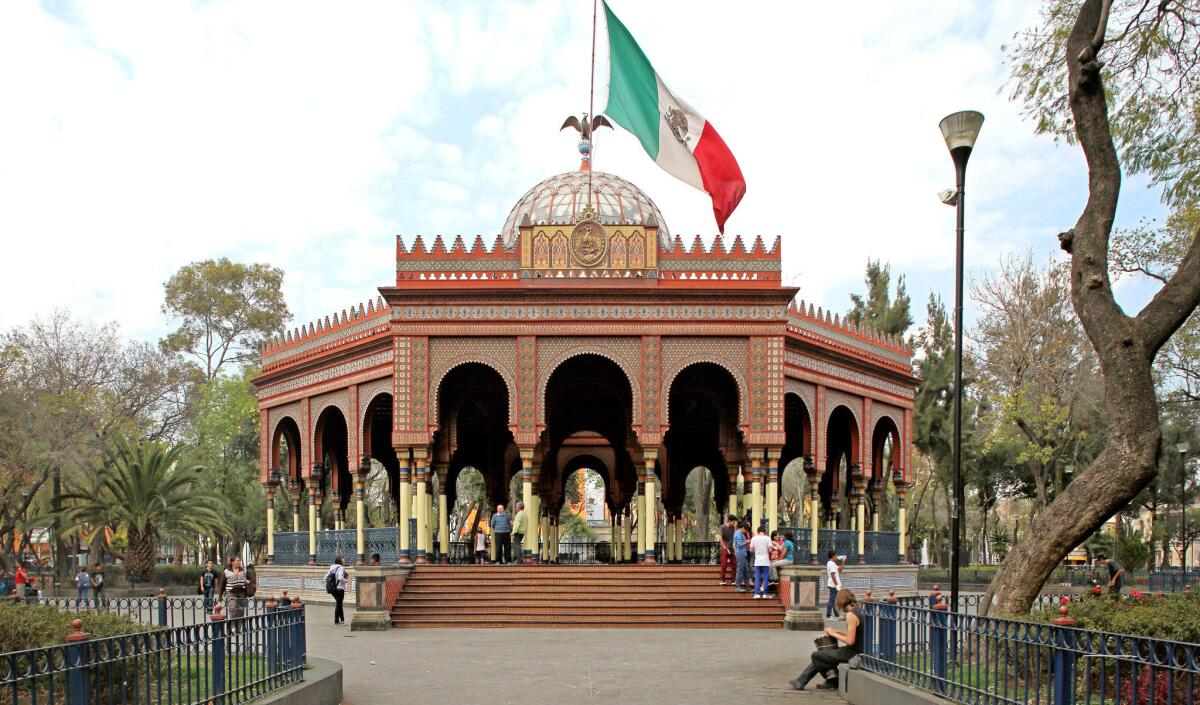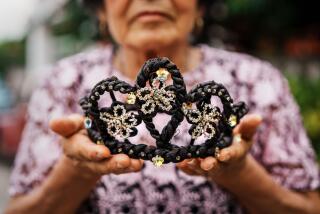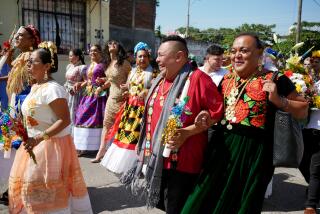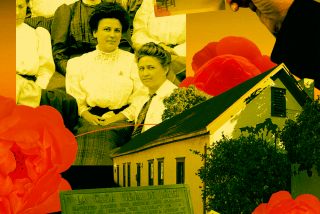Mexico City’s architectural treasures: A resident photographer’s list

This is a city for the bold, for those who love art, architecture and adventure and are open to its beautiful chaos.
At first glance, the capital — also known as DF for its “Distrito Federal” administrative designation — may seem like a concrete oasis. But dig a little and you’ll find a treasure trove of styles: colonial-era buildings such as the Mexico City Metropolitan Cathedral, the majestic Palacio de Bellas Artes, which took 30 years to complete, and Modernist buildings such as the Torre Latinoamericana.
The skyscraper is a favorite of architect and photographer Zaruhy Sangochian. “It will never go out of style,” said Sangochian, whose Instagram account has become a virtual architectural tour of the city.
Sangochian, 30, is a native of Cancún who fell in love with Mexico City when she visited it as a child. She has lived here since 2010 and loves sightseeing. “I like to move around all over the city,” she said.
Her photos — you can find them on Instagram at @zaruhy — show the everyday geometry of the city’s streets and buildings, the diamond-shaped metal gates, the triangle-shaped windows, the soaring sharp angles inside the Metro Candelaria subway station.
Here are some of her favorite structures:
Nonoalco Tlatelolco apartment complex, designed by Mario Pani. This 10-million-square-foot complex is in Cuauhtémoc borough, one of 16 that make up the federal district. The Tlatelolco subway station is inside the complex.
Sangochian’s favorite architecture comes from the 1950s and ‘60s; Pani is one of the most influential and prolific Mexican architects from that era. His style was inspired by Swiss-French architect Le Corbusier and his ideas on functionalism. The Tlatelolco complex was created with the notion that hospitals, schools, theaters and retail stores could be incorporated into one all-inclusive area.
Some of the Tlatelolco buildings were damaged during the 1985 earthquake, so Pani’s vision didn’t endure. That, Sangochian thinks, is a lost opportunity. “We would live a lot better,” she said. “We wouldn’t have to travel so far, for hours” for healthcare, for school, to be entertained, to shop.
The University Cultural Center, 1 Ricardo Flores Magón Ave., was designed by architect Pedro Ramírez Vázquez. The building housed the Ministry of External Relations until 2005 when the National Autonomous University of Mexico acquired it to expand cultural initiatives on the north side of the city.
The 334-foot-tall tower now has a lighted installation named after the Aztec god Xipe Totec. It is by American artist Thomas Glassford. The blue and red lights covering the tower can even be seen from the air as planes take off from Benito Juárez International Airport at night. “I would love to be able to see that from anywhere in the city,” Sangochian said.
Kiosco Morisco, or Moorish Kiosk (at Dr. Atl and Salvador Díaz Mirón streets near Buenavista subway station), was designed by engineer José Ramón Ibarrola in the 19th century. It was built as the Mexican exhibition hall for the New Orleans World’s Fair in 1884. In 1910, it was permanently settled in the center of Mexico City’s Santa María la Ribera neighborhood.
“I feel that spending an afternoon there can change your life by the sense of being in another era and the surrealness of appreciating a kiosk with Arab motifs in the middle of Mexico City,” Sangochian said. The kiosk, with wooden columns adorned with Moorish designs, stands out in the center of the plaza, surrounded by trees and grass. Most houses and buildings nearby are Colonial in design.
Ministry of Communications and Transportation building (Xola and Eje Central avenues, Metrobus Xola station Line 2) is a Sangochian favorite for its Modernist design and its murals, created with rocks of varying colors that come from all over Mexico. Different artists were invited to create murals and sculptures for the government building, including Juan O’Gorman, a Mexican painter and architect who, like Pani, was influenced by Le Corbusier and later Frank Lloyd Wright. His best-known mural is on the Central Library of the National University, Insurgentes Sur and University avenues.
____
Traveling to Mexico City: If you go
THE BEST WAY TO MEXICO CITY
From LAX, nonstop service to Mexico City is offered on Aeroméxico, United and Alaska, and connecting service (change of plane) is offered on Aeroméxico, United, US Airways and American. Restricted round-trip fares begin at $600, including all taxes and fees.
TELEPHONES
To call the numbers below from the U.S., dial 011 (the international dialing code), 52 (country code for Mexico), 55 (city code for Mexico City) and the number.
WHERE TO STAY
Condesa DF, 102 Veracruz Ave., Colonia Condesa; 5241-2600, from U.S. (866) 978-7020, condesadf.com. If you want to be in the center of all things hipster in Mexico City, stay in the Condesa borough. The trendiest restaurants, shops and art galleries are here or in the neighboring Roma borough. Doubles from $285.
Gran Hotel Ciudad de México, No. 82 16 de Septiembre Ave., Colonia Centro, Cuauhtémoc; 1083-7700, lat.ms/1Fr3sHw. Stay in the heart of downtown. Doubles from $151.
Downtown Mexico, 30 Isabel Católica St., Colonia Centro; 5130-6830, www.downtownmexico.com. If you want to stay downtown but modern design is more your style, this hotel may be for you. Doubles from $165.
W Mexico City, 252 Campos Eliseos, Colonia Chapultepec Polanco; 9138-1800, www.wmexicocity.com. Close to Chapultepec Park, the National Auditorium, the Archaeological Museum, Museum of Modern Art and the Rufino Tamayo Museum. Doubles from $409.
TO LEARN MORE
More to Read
Sign up for The Wild
We’ll help you find the best places to hike, bike and run, as well as the perfect silent spots for meditation and yoga.
You may occasionally receive promotional content from the Los Angeles Times.







